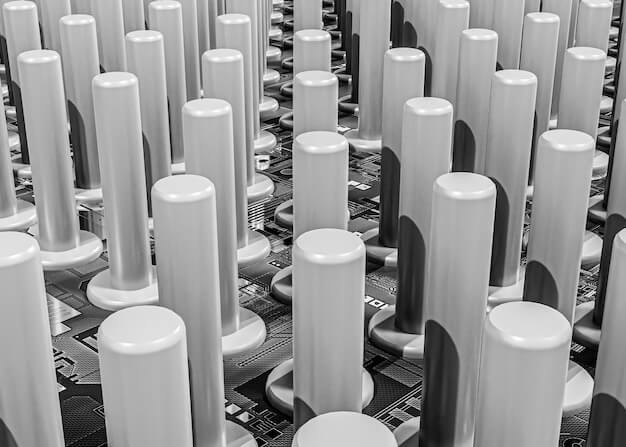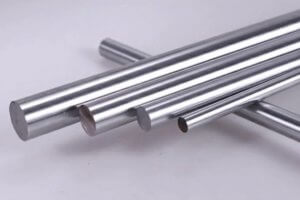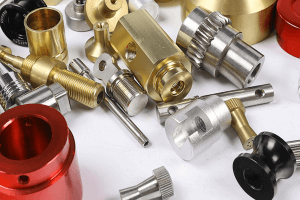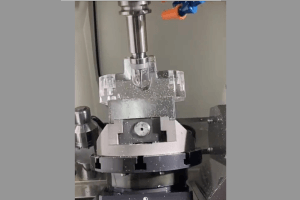As the manufacturing industry evolves, innovative techniques such as insert molding are reshaping the landscape of CNC machining. This article delves into the potential of insert molding in CNC machining processes, exploring its capabilities, applications, and the transformative impact it holds for the future of manufacturing.
Aluminum CNC Machining Service for Custom Parts
Understanding Insert Molding in CNC Machining
Insert molding is a manufacturing process that involves inserting preformed components, such as metal inserts or electronic parts, into a mold cavity before injecting molten material around them to form a final product. In CNC machining, insert molding offers unique advantages, including:
- Enhanced part consolidation: By incorporating multiple components into a single molded part, insert molding reduces assembly time and simplifies production processes.
- Improved part strength and durability: The fusion of materials in insert molding results in stronger bonds between components, enhancing the structural integrity and longevity of the final product.
- Complex geometry capabilities: Insert molding allows for the creation of intricate part designs and features that would be difficult or impossible to achieve through traditional machining methods.
Applications of Insert Molding in CNC Machining
- Automotive Industry: In automotive manufacturing, insert molding is utilized for producing interior components, electrical connectors, and sensor housings. By integrating metal inserts or electronic components directly into plastic parts, insert molding enhances functionality, reduces weight, and improves overall vehicle performance.
- Electronics Sector: Insert molding plays a crucial role in electronics manufacturing for encapsulating and protecting sensitive electronic components, such as circuit boards, connectors, and sensors. The process provides insulation, vibration resistance, and environmental protection, ensuring the reliability and longevity of electronic devices.
- Medical Device Production: In the medical device industry, insert molding is used to fabricate surgical instruments, implantable devices, and diagnostic equipment. By encapsulating metal components or sensors within biocompatible polymers, insert molding creates sterile and durable medical devices that meet stringent regulatory requirements.
- Consumer Goods Manufacturing: Insert molding finds applications in the production of consumer goods such as household appliances, consumer electronics, and sporting equipment. By integrating functional components, decorative features, or ergonomic grips directly into molded parts, insert molding enhances product performance, aesthetics, and user experience.
Advancements and Innovations in Insert Molding Technology
- Development of advanced materials: The introduction of new materials with enhanced properties, such as high-performance thermoplastics and bioresorbable polymers, expands the potential applications of insert molding in CNC machining.
- Integration of automation and robotics: Automation technologies, including robotic insert placement and automated mold handling systems, improve production efficiency, reduce labor costs, and ensure consistent part quality in insert molding processes.
- Adoption of simulation and optimization software: Computer-aided design (CAD) and computer-aided engineering (CAE) software enable manufacturers to simulate insert molding processes, optimize mold designs, and predict part performance, accelerating product development and reducing time-to-market.
Conclusion: Embracing the Future of Manufacturing with Insert Molding
In conclusion, insert molding represents a transformative technology that is revolutionizing CNC machining and reshaping the future of manufacturing. By offering unparalleled design flexibility, production efficiency, and part consolidation capabilities, insert molding enables manufacturers to create innovative products that meet the evolving demands of today’s market. As technology continues to advance and new materials and processes emerge, the potential of insert molding in CNC machining will only continue to grow, driving innovation and pushing the boundaries of what is possible in manufacturing.
Other Articles You Might Enjoy
- Precision CNC Machining for High-Performance Industrial Machinery
Precision CNC Machining for High-Performance Industrial Machinery The process of Precision CNC (Computer Numerical Control) machining is at the core of manufacturing high-performance industrial machinery. This technique leverages a computer's…
- CNC Machining for Medical Applications: Compliance and Material Selection?
Introduction to CNC Machining in Medical Applications CNC or Computer Numerical Control machining is a manufacturing process wherein pre-programmed computer software dictates the movement of factory tools and machinery. This…
- Material Versatility in CNC Machining: From Titanium to Thermoplastics
Introduction to CNC Machining CNC machining stands as a cornerstone in the manufacturing sector, enabling the precise creation of parts and components. This process utilizes computer numerical control (CNC) to…










 Afrikaans
Afrikaans Albanian
Albanian Amharic
Amharic Arabic
Arabic Armenian
Armenian Azerbaijani
Azerbaijani Basque
Basque Belarusian
Belarusian Bengali
Bengali Bosnian
Bosnian Bulgarian
Bulgarian Catalan
Catalan Cebuano
Cebuano Chichewa
Chichewa Chinese (Simplified)
Chinese (Simplified) Chinese (Traditional)
Chinese (Traditional) Corsican
Corsican Croatian
Croatian Czech
Czech Danish
Danish Dutch
Dutch English
English Esperanto
Esperanto Estonian
Estonian Filipino
Filipino Finnish
Finnish French
French Frisian
Frisian Galician
Galician Georgian
Georgian German
German Greek
Greek Gujarati
Gujarati Haitian Creole
Haitian Creole Hausa
Hausa Hawaiian
Hawaiian Hebrew
Hebrew Hindi
Hindi Hmong
Hmong Hungarian
Hungarian Icelandic
Icelandic Igbo
Igbo Indonesian
Indonesian Irish
Irish Italian
Italian Japanese
Japanese Javanese
Javanese Kannada
Kannada Kazakh
Kazakh Khmer
Khmer Korean
Korean Kurdish (Kurmanji)
Kurdish (Kurmanji) Kyrgyz
Kyrgyz Lao
Lao Latin
Latin Latvian
Latvian Lithuanian
Lithuanian Luxembourgish
Luxembourgish Macedonian
Macedonian Malagasy
Malagasy Malay
Malay Malayalam
Malayalam Maltese
Maltese Maori
Maori Marathi
Marathi Mongolian
Mongolian Myanmar (Burmese)
Myanmar (Burmese) Nepali
Nepali Norwegian
Norwegian Pashto
Pashto Persian
Persian Polish
Polish Portuguese
Portuguese Punjabi
Punjabi Romanian
Romanian Russian
Russian Samoan
Samoan Scottish Gaelic
Scottish Gaelic Serbian
Serbian Sesotho
Sesotho Shona
Shona Sindhi
Sindhi Sinhala
Sinhala Slovak
Slovak Slovenian
Slovenian Somali
Somali Spanish
Spanish Sundanese
Sundanese Swahili
Swahili Swedish
Swedish Tajik
Tajik Tamil
Tamil Telugu
Telugu Thai
Thai Turkish
Turkish Ukrainian
Ukrainian Urdu
Urdu Uzbek
Uzbek Vietnamese
Vietnamese Welsh
Welsh Xhosa
Xhosa Yiddish
Yiddish Yoruba
Yoruba Zulu
Zulu